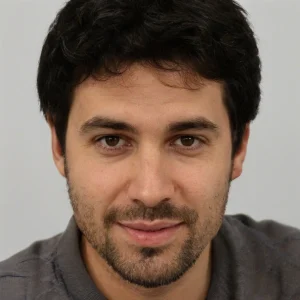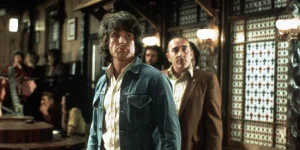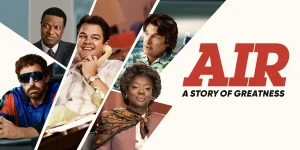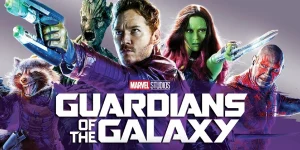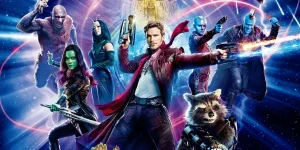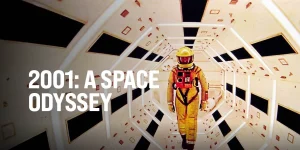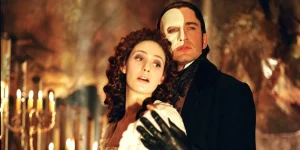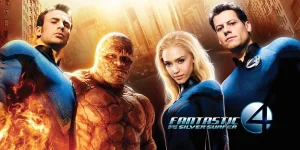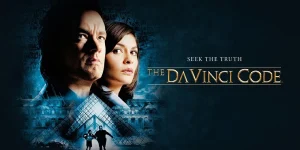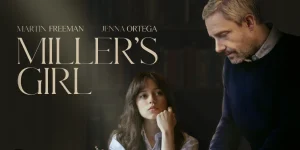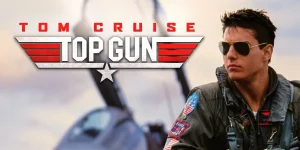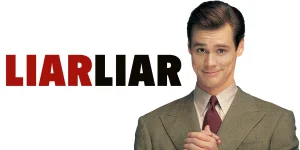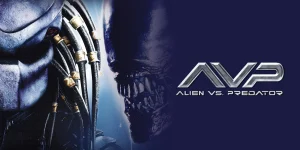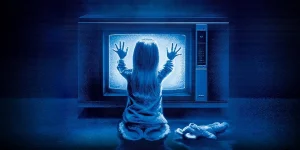Green Lantern (2011), directed by Martin Campbell, is a superhero film based on the DC Comics character Hal Jordan. It was envisioned as the starting point of a new cinematic universe but ended up being a standalone installment. Combining space opera elements with Earth-bound drama, the film attempts to bring to life the cosmic mythos of the Green Lantern Corps, though its execution received mixed to negative reviews upon release.
Table of Contents
ToggleDetailed Summary
The Origin of the Corps and Parallax
The movie begins with narration explaining the Green Lantern Corps, an intergalactic police force created by the immortal Guardians of the Universe. These beings harness the power of green energy (willpower) to protect the universe using power rings. However, a powerful entity named Parallax, who feeds on fear (yellow energy), escapes imprisonment and begins destroying planets.
The Green Lantern Abin Sur, who once imprisoned Parallax, is mortally wounded during an encounter with him and crash-lands on Earth. Before dying, he instructs his ring to find a new bearer.
Hal Jordan Becomes a Green Lantern
Hal Jordan (played by Ryan Reynolds) is a cocky but talented test pilot who struggles with responsibility and guilt over his father’s death. The ring finds Hal and brings him to the crashed Abin Sur. Hal is chosen as the ring’s new bearer, becoming Earth’s first human Green Lantern.
He’s taken to the planet Oa, headquarters of the Green Lantern Corps, where he meets alien Lanterns like Tomar-Re, Kilowog, and Sinestro. Although he trains briefly, he’s overwhelmed by self-doubt and considered unworthy by Sinestro.
Meanwhile on Earth, scientist Hector Hammond, who was called to examine Abin Sur’s corpse, becomes infected by Parallax’s yellow energy and starts gaining telepathic and telekinetic powers. His physical and mental state deteriorates, and he becomes obsessed with Carol Ferris (Blake Lively), Hal’s childhood friend and love interest.
Fear vs Will
Hal returns to Earth and saves civilians from a collapsing helicopter at a party, beginning to understand the potential of his powers. He confronts Hector, realizing the growing threat he poses, especially after Hector nearly kills his father, Senator Hammond.
Back on Oa, Sinestro tries to persuade the Guardians to harness the yellow energy of fear to fight Parallax, arguing that willpower is insufficient. A yellow power ring is forged, setting up a dark future.
Hal returns to Oa to ask the Corps for help stopping Parallax but is rejected. He returns to Earth alone, embracing his responsibility.
Movie Ending
In the climax, Hector attempts to kill Carol at a science lab, but Hal arrives in time to save her. Hector, drunk with power, tries to use Hal’s ring, but is defeated when Hal tricks him into removing it. Parallax then arrives on Earth and consumes Hector’s soul for his failure.
Hal challenges Parallax in a battle that spans from Earth to space. Overwhelmed at first, Hal uses his willpower and quick thinking to lure Parallax into Earth’s orbit near the sun. Parallax is ultimately destroyed when he is pulled into the sun’s gravitational field and incinerated.
As Hal drifts unconscious in space, Sinestro, Kilowog, and Tomar-Re arrive to rescue him. Hal is acknowledged as a true Lantern, finally earning Sinestro’s respect. Hal then reaffirms his commitment to protecting Earth and the universe.
Are There Post-Credits Scenes?
Yes. There’s a mid-credits scene, which sets up a potential sequel (that never happened):
Sinestro dons the yellow ring, demonstrating the seductive power of fear. His green uniform turns yellow, suggesting his transformation into one of the Green Lantern’s greatest villains. This is a nod to fans familiar with Sinestro’s arc in the comics. Unfortunately, due to the film’s poor performance, this storyline was never continued.
Type of Movie
Green Lantern is a superhero sci-fi action film with strong elements of space fantasy and origin story tropes. It blends cosmic adventure with character-driven drama, though not always seamlessly.
Cast
- Ryan Reynolds as Hal Jordan / Green Lantern
- Blake Lively as Carol Ferris
- Peter Sarsgaard as Hector Hammond
- Mark Strong as Sinestro
- Tim Robbins as Senator Hammond
- Temuera Morrison as Abin Sur
- Angela Bassett as Dr. Amanda Waller
- Geoffrey Rush (voice) as Tomar-Re
- Michael Clarke Duncan (voice) as Kilowog
Film Music and Composer
The score was composed by James Newton Howard, who blends epic orchestral cues with sci-fi ambiance. While the score isn’t particularly iconic, it supports the film’s emotional and action beats well enough.
Filming Locations
- New Orleans, Louisiana served as the primary filming location, doubling for Coast City (Hal Jordan’s hometown).
- Extensive green screen and CGI were used, especially for scenes on Oa and in space.
- Visual effects played a major role, though they were criticized for being over-reliant on CGI, especially for Hal’s suit, which was fully digital.
Awards and Nominations
The film received mostly negative reviews and was considered a box-office disappointment. It was nominated for a few technical awards but also received Razzie Award nominations, including:
- Worst Supporting Actor: Peter Sarsgaard
- Worst Screenplay
- Worst Picture (nomination)
Behind the Scenes Insights
- Ryan Reynolds was cast over actors like Bradley Cooper and Jared Leto.
- Blake Lively and Ryan Reynolds met during filming and later married.
- The production suffered from last-minute script rewrites and creative disagreements.
- The entirely CGI suit was a controversial choice that received backlash from fans and critics.
- A sequel was originally planned and teased, but was scrapped due to poor reception.
Inspirations and References
The film is based on DC Comics’ Green Lantern, primarily focusing on Hal Jordan’s origin. Elements are drawn from:
- Green Lantern: Secret Origin by Geoff Johns
- Classic Green Lantern lore involving the Emotional Spectrum, Guardians, and Sinestro Corps
Alternate Endings and Deleted Scenes
Several scenes were trimmed from the final cut, including:
- A longer introduction to Oa and the Corps.
- More backstory on Sinestro’s internal conflict.
- Additional training sequences for Hal.
These scenes exist in extended TV versions but did not significantly change the plot. The ending remained consistent.
Book Adaptations and Differences
There was a novelization released alongside the movie. It included:
- More in-depth exploration of Hal’s inner struggles.
- Expanded scenes on Oa.
- A clearer setup for Sinestro’s eventual turn.
Though faithful to the movie’s events, the book smooths over some of the pacing issues.
Memorable Scenes and Quotes
Key Scenes
- Hal’s first transformation into Green Lantern.
- The visit to Oa and seeing the Corps assembled.
- Hal stopping the crashing helicopter with a giant green racetrack.
- Hal vs. Parallax in Earth orbit.
Iconic Quotes
- “In brightest day, in blackest night, no evil shall escape my sight.” — Hal Jordan
- “You have the ability to overcome great fear.” — The Ring
- “You’re afraid to admit you’re afraid.” — Carol Ferris
Easter Eggs and Hidden Details
- The number 2814, Hal’s space sector, appears subtly on mission screens.
- Amanda Waller, a recurring DC character, is introduced here (she later appears in the Suicide Squad films, albeit played by a different actress).
- The planet Ryut, Parallax’s prison, is from deep Green Lantern comic lore.
- The alien Bzzd can be spotted among the Corps members (he’s the insect-sized Lantern from the comics).
Trivia
- Ryan Reynolds later played Deadpool and frequently mocks Green Lantern in those films.
- The film had a budget of around $200 million but only grossed $219 million globally—barely breaking even after marketing costs.
- Martin Campbell, who had directed Casino Royale, said he regretted doing Green Lantern due to studio interference.
- A Green Lantern reboot has been in development at DC for years but remains in limbo.
Why Watch?
If you’re a fan of cosmic superhero lore, the mythology behind the Green Lantern Corps, or curious about Ryan Reynolds’ pre-Deadpool superhero stint, this film is worth a look—especially to see how Hollywood tried (and failed) to launch DC’s cosmic universe. It’s also a case study in missed potential, with interesting world-building bogged down by weak execution.
Director’s Other Movies
- Casino Royale (2006)
- GoldenEye (1995)
- The Mask of Zorro (1998)
- Edge of Darkness (2010)


